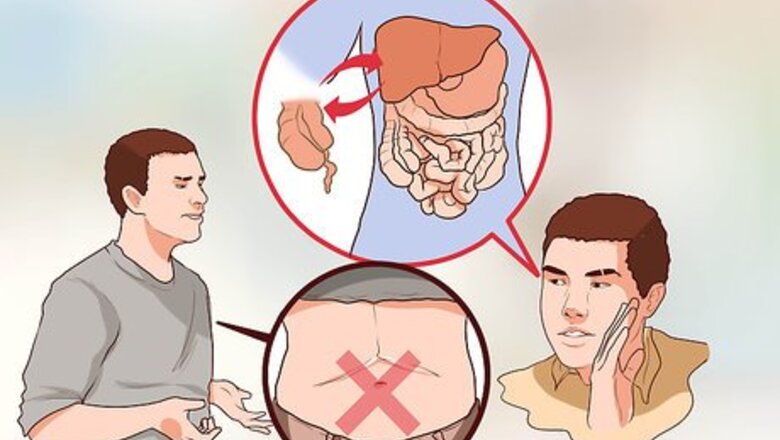
views
Understanding How Delusions Are Defined

Know what a delusion is. A delusion is a fixed belief that does not change even with conflicting evidence. This means that, even if you try reason through a delusion with the person who has one, his belief will not change. When you present a variety of evidence to contradict the delusion, this person will still affirm the belief. Peers with the same societal and cultural backgrounds would find the belief unlikely or not even understandable. An example of a delusion considered bizarre would be the belief that one’s internal organs have been replaced with another’s internal organs without visible scars or other signs of surgery. An example of a less bizarre delusion is the belief that one is being watched or videoed by police or government officials.

Know the criteria for a delusional disorder. Actual delusional disorder is a specific disorder that involves having delusions for one month or longer. It is definitely not during the course of another psychotic disorder such as schizophrenia. The following are criteria for a delusional disorder: Having delusions for a month or longer. The delusions do not meet the criteria of schizophrenia, which requires that the presence of delusions is accompanied by other markers of schizophrenia such as hallucinations, disorganized speech, disorganized behavior, catatonic behavior, or diminished emotional expression. Other than the delusions and aspects of life affected by the delusion, functioning are not impacted. The individual is still able to take care of daily needs. His behavior is not considered odd or bizarre. Delusions are more prominent in duration than mood symptoms or hallucinations associated with the delusion. This means that mood changes or hallucinations are not the main focus or most prominent symptom. The delusion is not caused by a substance, medication, or medical condition.
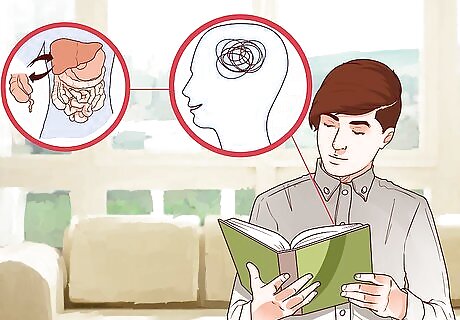
Know that certain disorders can have delusions. There are several official disorders that can have hallucinations or delusions or both, some of these include schizophrenia, bipolar disorder, depression, delirium, and dementia.,
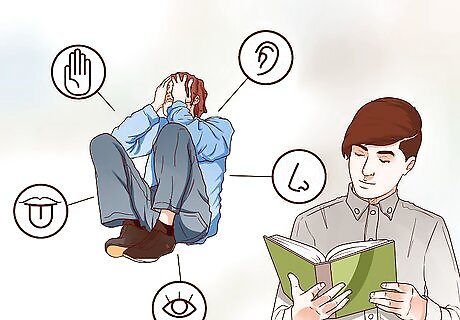
Understand the difference between a delusion and a hallucination. Hallucinations are experiences that involve perception and do not have an external stimulus. They also usually involve one or more of the five senses, most frequently auditory. Hallucinations can also be visual, olfactory, or tactile.
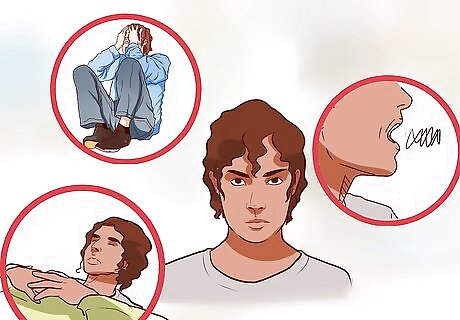
Differentiate between delusional disorder and schizophrenia. Delusional disorders do not meet the criteria of schizophrenia. Schizophrenia requires other markers as well, such as hallucinations, disorganized speech, disorganized behavior, catatonic behavior, or diminished emotional expression.
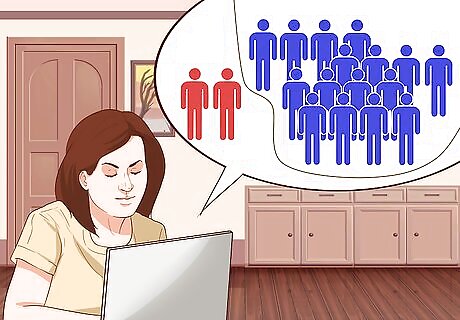
Understand the prevalence of delusional disorders. Delusional disorder affects about 0.2% of the population as any given time. Because delusional disorder often does not affect functioning, it may be hard to tell that a person does have a delusional disorder, because they do not appear odd or strange.
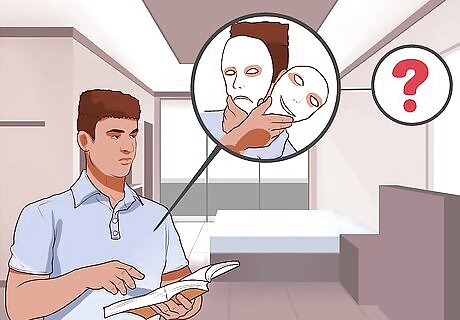
Know that causes of delusions are unclear. There is extensive research and theory regarding the cause and course of delusions, however researchers have yet to pin point one specific and definite cause.
Understanding Different Types of Delusions

Recognize erotomanic delusions. Erotomanic delusions involve themes that another person is in love with the individual. Usually, the person who is believed to be in love with the individual is of higher status, such as a famous person or boss. Often, this person will try to make contact with the person she believes is in love with her. It can even prompt stalking or violence. Usually, erotomanic delusions involve peaceful behavior. But sometimes individuals with the delusion can become irritable, passionate, or jealous. Common behavior for those with erotomania include: The belief that the object of her delusion is trying to send her coded messages, such as in certain types of body language or words. She may participate in stalking or making contact with the object of the delusion, such as writing letters, sending texts, or emails. She may do so even if the contact is unwanted. There is a persistence belief that the object of the delusion is still in love with her even with contrary evidence such as a restraining order. This particular type of delusion is more common in women than in men.

Look for delusions of grandiosity. Grandiose delusions are delusions with the theme of having an unrecognized talent, insight, or discovery. Persons with grandiose delusions are convinced of their own uniqueness such as having an important role or other powers or abilities. They may also believe themselves to be a famous celebrity or think they have invented something fanatic such as a time machine. Some common behaviors for those experiencing grandiose delusions may include seemingly boastful or exaggerated behavior, and they may come off as condescending. Additionally, this person may seem impulsive and unrealistic about goals or dreams.
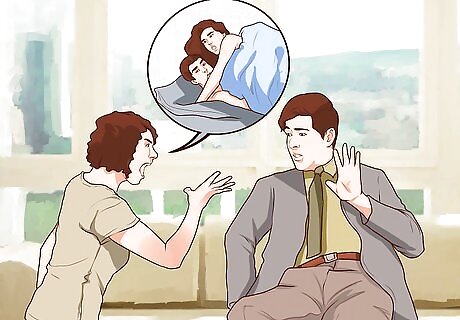
Look for jealous behavior that might signal a delusion. Jealous delusions have the common theme of having a spouse or lover being unfaithful. Even if these is evidence to the contrary, the person is certain that his partner is having an affair. Sometimes people with this type of delusions will piece together certain events or experiences and conclude that it is evidence of infidelity. Common behavior in those who have jealous delusions include violence in the relationship, attempts to limit their partner's activities, or attempts to keep their partner at home. In fact, this delusional type is most associated with violence and is often a common motive for homicide.

Watch for behaviors that indicate a persecutory delusion. Persecutory delusions include themes that the person is being conspired or plotted against, cheated, spied on, followed, or harassed. Sometimes this type of delusion is referred to as paranoid delusion and is the most common type of delusion. Sometimes individuals with persecutory delusions experience a vague feeling of persecution without having the ability to pinpoint the cause. Even small insults can be exaggerated and seen as an attempt to be cheated or harassed. Behaviors for those with persecutory delusions may include being angry, guarded, resentful, or suspicious.
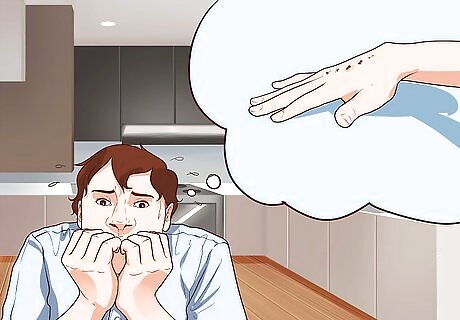
Watch for delusions that involve bodily functions or sensations. Somatic delusions are ones that involve the body and the senses. This could include delusions about appearance, disease, or infestation. Common examples of somatic delusions include the belief that the body gives off a bad odor, or that the body is infested with insects in the skin. Somatic delusions can also include the belief that one’s physical appearance is ugly or that a part of the body is not functioning properly. Behaviors for those experiencing somatic delusions are usually specific to the delusion. For instance, someone who is convinced of an insect infestation may continually consult a dermatologist and refuse psychiatric care because he does not see a need for it.
Seeking Help for Delusional Disorders
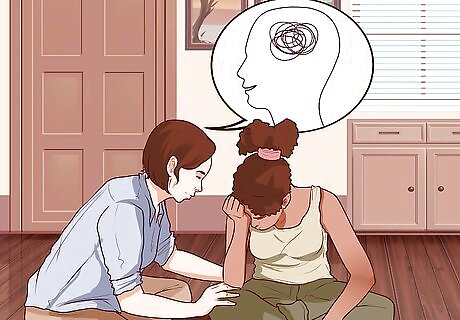
Talk with the individual suspected of a delusional disorder. A delusional belief may not become known until the person begins to discuss her beliefs or how her beliefs might affect her relationships or work. Sometimes, you may recognize unusual behavior that will indicate a delusion. For example, a delusion may become apparent due to unusual daily choices such as not wanting to carry a cell phone if they belief they are being watched by the government. Avoid challenging the person on their delusions. That can actually intensify them or make them less likely to seek treatment.

Get a diagnosis by a mental health professional. Delusional disorders are serious conditions that require treatment from mental health professionals. If you think a loved one is suffering with a delusion, it can be due to many different types of disorders, so it is important to get them to a professional immediately. It is important to remember that only a licensed professional can diagnose someone with delusional disorder. Even licensed professionals conduct an extensive interview including review of symptoms, medical and psychiatric history, and medical records in order to accurately identify delusional disorder. Diagnosing delusion disorder can be difficult because the mental health professional has to prove that the things the patient is experiencing aren't really happening. It can be very helpful to have friends or family who can step in and clear things up, but it's still challenging.
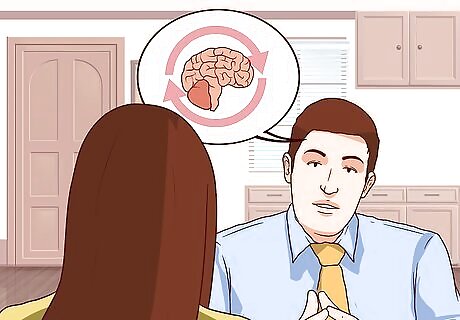
Help the individual get behavioral and psycho-educational therapy. Psychotherapy for delusional disorders involves establishing a trusting relationship with a therapist on which behavioral changes can be made, such as improvement in relationships or work troubles that are affected by the delusions. Additionally, once behavioral changes have made progress, the therapist will help challenge the delusions, starting with the smallest and least important to the individual. Therapy of this kind can be lengthy and take 6 months to a year to see progress.

Ask the individual’s psychiatrist about antipsychotic medication. Treatment for delusional disorder usually involves the use of antipsychotic medication. Antipsychotic medication has shown to help patients achieve freedom from symptoms 50% of the time, while 90% showed at least some symptom improvement. The most commonly used antipsychotics for the treatment of delusional disorders include pimozide and clozapine. Olanzapine and risperidone have been used as well. It can sometimes be challenging to get patients to take their medication. Since they believe that their experiences are real, they are often very resistant to treatment, especially on an outpatient basis.

















Comments
0 comment